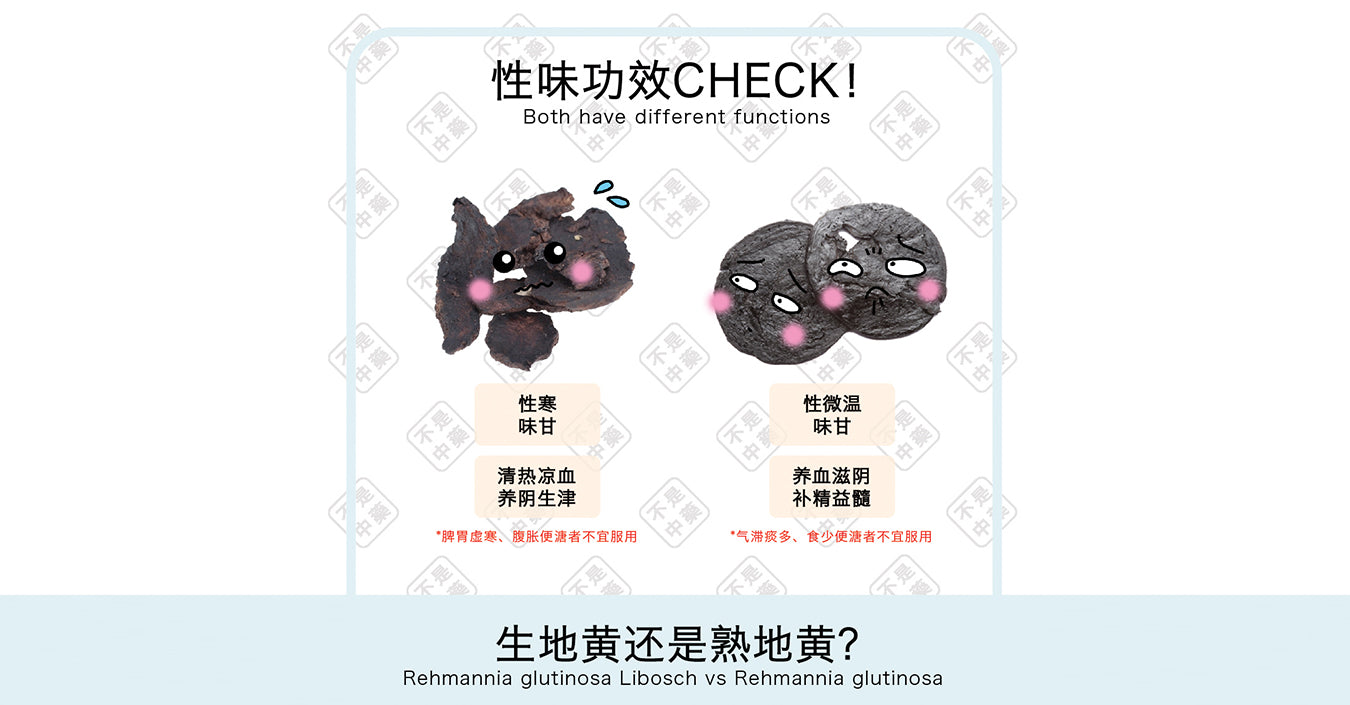Your Cart is Empty
🚛 FREE SHIPPING for order RM 120 & above
🚛 FREE SHIPPING for order RM 120 & above
🚛 FREE SHIPPING for order RM 120 & above
【不是中藥 itsherbs.com】Body Types
[不是中藥 itsherbs.com] Health Tips
【不是中藥 itsherbs.com】Media Reports • Announcement
【不是中藥 itsherbs.com】Body Types
8 major constitutions of traditional Chinese medicine
[不是中藥 itsherbs.com] Health Tips
Chinese Medicine // Wellness // Knowledge
【不是中藥 itsherbs.com】Media Reports • Announcement
Media Coverage • Announcements
1 min read

The difference between raw and cooked rehmannia
The raw material is cold in nature and belongs to the heart, liver, and kidney meridians in traditional Chinese medicine. After being mixed and steamed with yellow wine, sun-dried, and steamed, its nature changes from cold to warm, and it belongs to the liver and kidney meridians.
Rehmannia has a cold nature, and its main effects are clearing heat and cooling the blood, stopping cough, nourishing yin, tonifying the kidney, and stopping bleeding. In Liuwei Dihuang Wan, there is the ingredient Rehmannia, which has a significant kidney-tonifying effect.
Rehmannia glutinosa (prepared), changes from cold nature to warm nature, its main effect is to nourish the blood. Together with other Chinese herbs, it can treat symptoms of blood deficiency. In addition, prepared Rehmannia is also effective for patients with soreness and weakness in the waist and legs, tinnitus and deafness, and frequent dizziness.
Raw Rehmannia and prepared Rehmannia both belong to the Rehmannia root, but due to different processing methods, they differ in properties and medicinal value. Therefore, it is important to distinguish between them when selecting.
